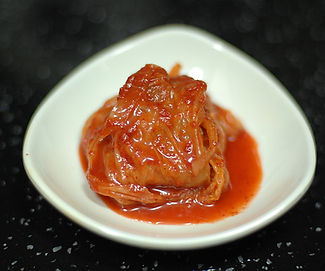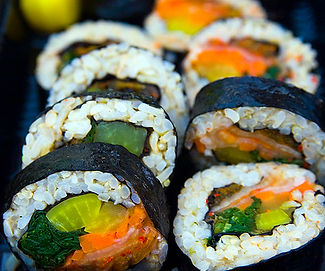KOREAN FOOD

Bibimbap
Rice with nutrient-packed flavor
Bibimbap, or cooked rice mixed with vegetables, sautéed beef, and twigak (dried seaweed or vegetables fried in oil) is one of the definitive Korean meals. There are three common beliefs about the origin of bibimbap. One theory is that it stemmed from the practice of mixing bap (cooked rice) with other dishes used for the ancestral rite of eumbok. Others say that bibimbap originated from mixing leftovers together as a midnight snack on Lunar New Year’s Eve. The last theory is that farmers out working the fields would each bring a portion of food to be mixed together for meals and divided out evenly.

Samgyetang
Rejuvenate yourself during the sweltering summer
Samgyetang is made by simmering a whole young chicken stuffed with ginseng, hedysarum root, jujubes, garlic, and sweet rice. Considered an energy-boosting dish best eaten on hot days, it is a classic Korean dish that has become popular among diners of all nationalities. Japanese author Murakami Ryu and Chinese film director Zhang Yimou have both given extensive praise to the dish. Many restaurants add samgye-tang to their menu during the summer, an example of its popularity.

Bulgogi
A sweet treat for special days
Bulgogi is prepared by marinating thin slices of beef in a sweet soy sauce mix before grilling them. Bulgogi is a high-class meal, only being served in the royal court and yangban (noble) households in the past. Bulgogi originated from a dish called maekjeok. Maek was the name of the northeast region of China, and is also a reference to Goguryeo, one of the earliest Korean kingdoms. Maekjeok is made with barbecued beef skewers, and according to folklore, evolved into present-day bulgogi through the introduction of grills, which made skewers obsolete.

Kimchi
Over 1,500 years of fermented tradition
Kimchi is a fermented dish made with vegetables and a variety of seasoning ingredients. At a time when storage methods were not well-developed, kimchi was an important source of vitamins in the winter, when fresh vegetables were unavailable. There are over three hundred varieties, but when it was first made prior to the Three Kingdoms Period (AD 57-668), it required a very simple recipe of salting and storing napa cabbage in a ceramic container for fermentation. What was originally a simple salted pickle has now become a complex dish requiring assorted seasonings and varies according to climate, geographical conditions, local ingredients, methods of preparation, and preservation.

Gimbap
A full meal in a single roll
Gimbap is made by spreading white rice on a sheet of gim (dried laver), layering it with spinach, pickled radish, carrots, egg, and beef, and then rolling it up like sushi. It was in the 1960s and 1970s that the gimbap we know today - rolled up into a cylindrical form - became popular. This rice-roll was the default picnic lunch for annual spring and autumn school outings. Many Koreans fondly remember eating the end pieces of the rolls while their mothers prepared gimbap on the morning of school field trips.

Tteokbokki
The most popular snack
Originally, tteokbokki was not a spicy dish. In the royal courts of Joseon, it was prepared by simmering beef, carrots, onions, pyogo (shitake mushroom), and other ingredients together with rice cakes in soy sauce. The colorful ingredients made it visually appealing as well as nutritional. It is believed that tteokbokki seasoned with spicy gochujang paste first appeared in the 1950s and became widely popular later during the 1970s.